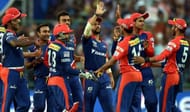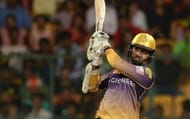
From Rajasthan Royals winning the inaugural IPL to Mumbai Indians 3rd title last year, IPL has evolved leaps and bounds. Over the years a lot of innovative strategies have been used and only a few of them have succeeded. A lot of research goes into making these decisions and with technology aiding, it becomes a battle of brains. Many teams have used analytics to judge players performance and it has assisted in assembling the best possible XI for a game. Consider the case of using particular bowlers for exploiting the weakness of batsmen. Recently KKR started with Piyush Chawla against Jason Roy. The logic behind this move was that the Englishman has been dismissed 12 times by a leg-spinner in 20 games. Such insights can turn the game around and make it easier for the captain to take decisions.
One team that has been known for using unconventional tactics is Kolkatta Knight Riders. The infamous multi-captain theory of John Buchanan had made the headlines and created a lot of controversies. Though the move failed, it was an innovative approach to play the game.
In this piece, we look at three strategies that have made IPL more interesting:
#3 Spinners bowling in the powerplay

In the inaugural IPL, 96% of the time fast bowlers used to bowl in the powerplay. 11 years later this figure has reduced drastically and now 67% of the time teams prefer to bowl seamers in the powerplay. In 2008, there were only seven wickets taken by spinners in the powerplay at an economy rate of 8.73. In the 10th edition of IPL(2017), spinners ruled the roost in powerplay and took an impressive 40 wickets at an economy rate of 7.67.
Among the bowlers, only three have gone at a rate of fewer than six runs per over in the Powerplays. Sunil Narine leads the pack with an economy rate of 5.33, by far the best in the IPL. He has consistently spun a web around the batsman and made it hard for them to get a good start.
#2 Horses for courses strategy

"Horses for Courses", strategy means choosing the person ideally suited for a particular job on hand. This individual may not be the best person on the team, but he is the best person for the job on hand. He has the required skills that you are looking for.
This strategy was made famous by Delhi Daredevils in 2016. They frequently changed their teams according to the playing conditions. Foreign players were rotated continuously and this ploy won them a lot of games. Rahul Dravid and Paddy Upton must be given credit for using this strategy.
Before the start of this year's IPL, KKR coach Jacques Kallis had the following things to say,
“We won’t have a set plan this season. We will come up with different strategies for different situations and be flexible with our batting order."
This ploy makes sense for two reasons. One is that you get the ideal players for particular conditions and the other is that everyone gets a chance to play at some point in time. Going forward we will see many teams use this strategy and it will be interesting to see if they will be successful.
#1 Opening with pinch-hitters

In the last 10 years of IPL, the safety-first strategy has eventually been eroded from the game by the onset of the pinch hitter, a player promoted to the top of the order and given a free-license to attack. KKR has never ceased to amaze and they are one of the few teams who has extensively used Sunil Narine to open the innings.
The move to send Narine is a well-thought decision. If he is going to bat at number eight, Sunil is going to face two balls there, he'll probably get what 8, or 10 runs, 12 maximum. Contrast that to him opening the innings, he can play 15 balls and get the team to a flying start. In the first game against RCB, Narine scored a 17-ball fifty to help the hosts chase down a competitive 176 with seven balls to spare. In the first six overs, Narine strikes at 176.19 which is the best by any batsman in the powerplay from the last five years of IPL.
In this year's IPL, surprisingly we have not seen other teams using this strategy. Going forward they can take a leaf out of KKR's book and try to use this strategy.
Get real-time updates on IPL 2025, live scores, IPL Prediction, match schedule, points table,Result & squad -CSK, MI, RCB, KKR, SRH, LSG, DC, GT, PBKS
